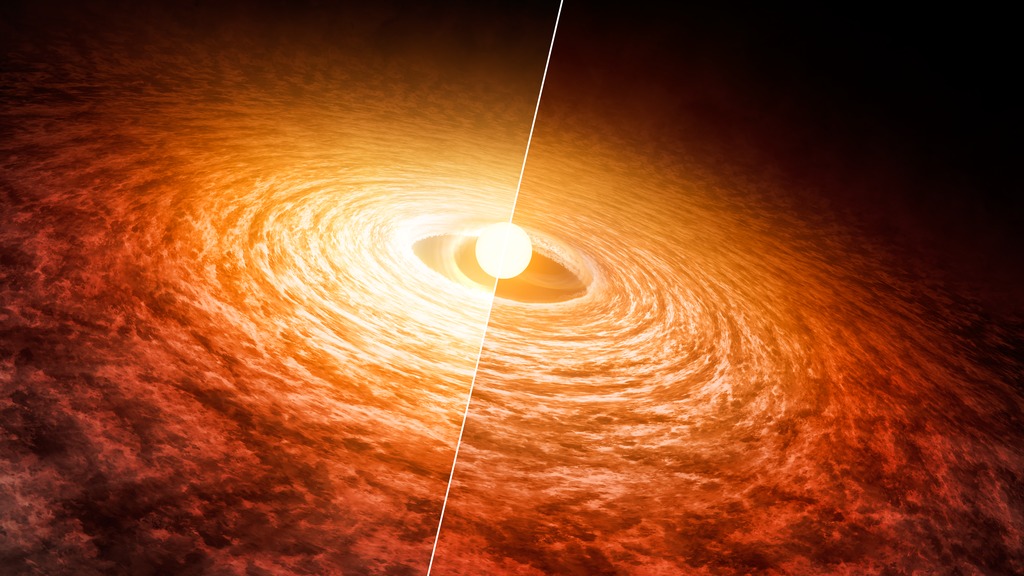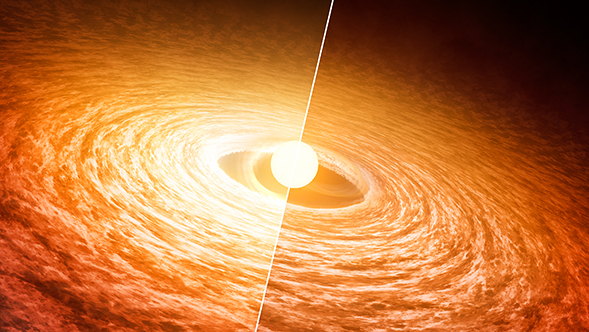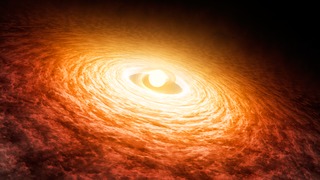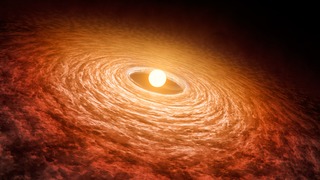
Credit: NASA/JPL-Caltech/T. Pyle (IPAC)
Artwork • June 14th, 2016 • sig16-011
sig16-011
This artist's concept illustrates how the brightness of outbursting star FU Orionis has been slowly fading since its initial flare-up in 1936. The star is pictured with the disk of material that surrounds it. Researchers found that it has dimmed by about 13 percent at short infrared wavelengths from 2004 (left) to 2016 (right).
The 2004 data were collected with NASA's Spitzer Space Telescope, and the 2016 data were collected with the Stratospheric Observatory for Infrared Astronomy (SOFIA).
FU Orionis is a few hundred thousand years old. It is possible that when our sun was younger, it also went through a period of intense brightening followed by dimming.
These results were presented at the American Astronomical Association meeting in June 2016 in San Diego.
NASA's Jet Propulsion Laboratory, Pasadena, California, manages the Spitzer Space Telescope mission for NASA. Science operations are conducted at the Spitzer Science Center at Caltech. Spacecraft operations are based at Lockheed Martin Space Systems Company, Littleton, Colorado. Data are archived at the Infrared Science Archive housed at IPAC at Caltech. Caltech manages JPL for NASA.
SOFIA is a joint project of NASA and the German Aerospace Center (DLR). The aircraft is based at NASA Armstrong Flight Research Center's facility in Palmdale, California. NASA's Ames Research Center in Moffett Field, California, manages the SOFIA science and mission operations in cooperation with the Universities Space Research Association (USRA) headquartered in Columbia, Maryland, and the German SOFIA Institute (DSI) at the University of Stuttgart.
About the Object
- Name
- FU Orionis
- Type
- Star > Circumstellar Material > Disk > Protoplanetary
- Distance
- 1,500 Light Years







